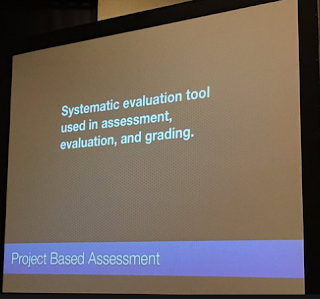The Seven Essentials for Project-Based Learning
 Every project-based learning has basically seven essential pillars which make the learning meaningful not only to the learners but also the general public; since the students are supposed to serve the community when they complete school time. The seven essentials are as discussed below:
1. A need to know;
Every project-based learning has basically seven essential pillars which make the learning meaningful not only to the learners but also the general public; since the students are supposed to serve the community when they complete school time. The seven essentials are as discussed below:
1. A need to know;
Teachers can powerfully activate students' need to know content and actually make real world products by
launching a project with a doable entity that engages interest and
initiates questioning. A doable entity can be almost anything: a field trip, a video or a lively discussion. In contrast, announcing a project by distributing a
packet of papers is likely to turn students off; it looks like a setting for some busywork to come.
Many students find schoolwork meaningless because they don't
perceive a need to know what they're being taught. They are unmotivated by a
teacher's suggestion that they should learn something because they'll need it
later in life, for the next course, or simply because it's likely to be on
the coming exams. With a compelling student project, the reason for learning
relevant material becomes clear. the student develops a feeling that;'I need to know this to meet the challenge I've
accepted'.
2. A driving question or challenge;
A good driving question captures the nucleus of the project in
clear, compelling language, which gives students a sense of purpose and
challenge. The question should be provocative, open-ended, complex, and linked
to the core of what you want students to learn.
A project without a driving question is like research work without a problem statement. Without a problem statement, a reader may fail to pick out the main point a writer is trying to make; but with a problem statement, the main point is unmistakable. Without a driving question, students
may not understand why they are undertaking a given project.
3. Students' voice and choice;
A project-based learning is important in many ways but mostly, in terms of making a project feel
meaningful to students, the more voice and choice, the better.
However,
teachers should design projects with an element of student choice that fits
their own style and students.
learners can as well select what
topic to study within a general driving question or choose how to design,
create, and present products. As a core to the project, teachers might provide a
limited menu of options for creative products to prevent students from becoming
overwhelmed by choices. However, students can also decide what products they will create, what resources they
will use, and how they will structure their time. Students could even choose a
project's topic and driving question and the teachers remain as typical guides to the students.
4. The 21st century skills;
Projects give students opportunities to build such 21st
century skills as collaboration, communication, critical thinking, and the use
of technology, which will serve them well in the workplace and life. This
exposure to authentic skills meets the second criterion for meaningful work. A teacher in a project-based learning environment explicitly
teaches and assesses these skills and provides frequent opportunities for
students to assess themselves.
5. Inquiry and innovation;
Students find project work more meaningful if
they conduct real inquiry, which does not mean finding information in books or
websites and pasting it onto a poster.
In real inquiry, students follow a trail
that begins with their own questions, leads to a search for resources and the
discovery of answers, and often ultimately leads to generating new questions,
testing ideas, and drawing their own conclusions.
Real inquiry comes
innovation where a new answer to a driving question, a new product, or an
individually generated solution to a problem. The teacher does not ask students
to simply reproduce teacher or textbook provided information in a pretty
format.
To guide students in real inquiry, teachers refer
students to the list of questions they generated after the doable entity. A teachers should guide them
to add to this list as they discover new insights. The classroom culture should
value questioning, hypothesizing, and openness to new ideas and perspectives.
6. Feedback and revision;
Formalizing a process for feedback and revision
during a project makes learning meaningful because it emphasizes that creating
high-quality products and performances is an important purpose of the endeavor.
Students need to learn that most people's first attempts don't result in high
quality and that revision is a frequent feature of real-world work.
In addition to providing direct feedback, the
teacher should guide students in using rubrics or other sets of criteria to
critique one another's work.
7. A publicly presented product;
Schoolwork is more meaningful when it's not done
only for the teacher or the test. When students present their work to a real
audience, they care more about its quality.
Once again, it's "the more,
the better" when it comes to authenticity. Students might replicate the
kinds of tasks done by professionals—but even better, they might create real
products that people outside school use.
I sincerely acknowledge with special thanks, the works of John Larmer and John R. Mergendoller
END












